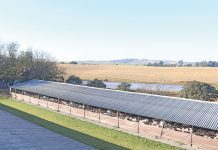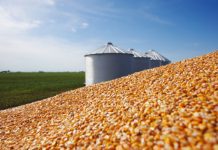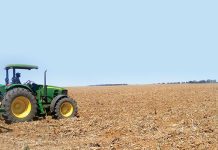SARS requires that a diesel rebate claimant should record the quantity (litres) of diesel/biodiesel involved and how the diesel/ biodiesel was used. You’ll need a master record sheet and a series of logbooks:
READ: SA agricultural machinery sales decline
How to get a diesel rebate
Step 1: When you buy the diesel make sure you’re issued with a tax invoice. There will be no VAT charged on diesel as it’s zero-rated.
Step 2: Record the date and quantity of diesel bought on your master record sheet. The cost does not have to be recorded, as it doesn’t influence the rebate. It’s the litres that matter. The rate which you are paid is set by SARS. Currently, it’s R1,58/l.
Step 3: Whether you’re filling a tractor, bakkie, pump or generator, each time diesel is used from the original purchase it must be recorded on the master record sheet.
Step 4: Diesel drawn and recorded on the master record sheet must then be entered into the logbook belonging to the vehicle, generator or other equipment.
Equipment using rebate diesel is legally required to have its own logbook, where the specific application for usage is recorded. This is imperative for rebate claims and will be scrutinised by SARS inspectors. Whatever is recorded on the master record sheet needs to balance with what’s been put into the logbook.

NOTE:
Every time the farm tank is filled or a vehicle is filled at a commercial outlet, the total litres should be entered into the master record sheet (along with the vehicle’s registration number). In this example, there’s been a bulk drop of 5 000l from which the farm vehicles fill up. The same tractor could also be filled up at the local garage on separate occasions. The litres purchased would then also be entered into the master record sheet and the vehicle logbook in the same way that the bulk drop is. Remember – the figures should balance with the total quantities on the tax invoices supplied. ‘Hours worked’ applies to a vehicle or other piece of equipment. It’s calculated by subtracting the last reading from the current reading. In the case of 17/10, it’s been assumed the last reading on the hour metre, taken on, say, 14/10, was 239. Therefore, 250 – 239 = 11 hours.

NOTE: Litres used for ploughing field 12 are calculated by multiplying the hours worked (4) by the diesel/hour consumption recorded on the master sheet (5,8). The logbook should always balance with the master record sheet.
Other uses
A master record sheet will also help you keep track of how much diesel is available in the tank. Vehicle services can also be recorded in the logbook. If you’re filling up a tractor, record the hours on the tractor hour meter. This will help you keep a check on hourly diesel consumption for input costing purposes and to monitor theft. The benefits of installing an hour meter in vehicles are clear.
Literacy
Record keepers need to be literate and many farm workers are illiterate, although literacy levels are improving. For now, it’s best to appoint someone to be responsible for filling in the logbooks and master record sheet. This would be a smart move considering how much information needs recording to remain compliant in the current tax climate.
The foregoing is merely intended as an overview of the SARS procedures relating to diesel rebates. While every effort has been made to ensure the information supplied by SARS was accurate at the time of going to print, Farmer’s Weekly cannot be held responsible for any misinterpretation of the procedures or any errors or omissions.
For more information, contact Susan Pletts on 082 572 3724, or at [email protected] with ‘Finance’ in the subject line.
This article was originally published in the 30 November 2012 issue of Farmers Weekly.













